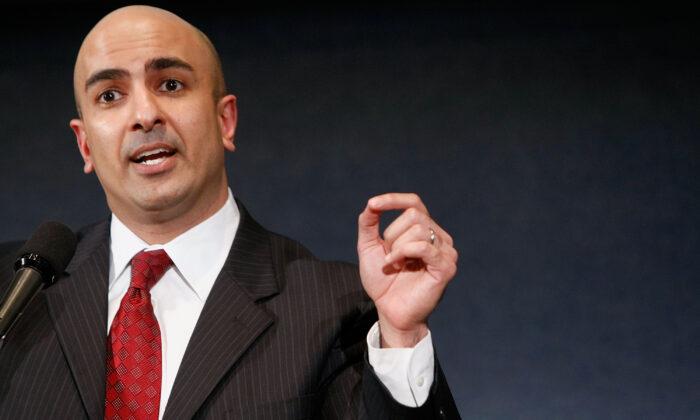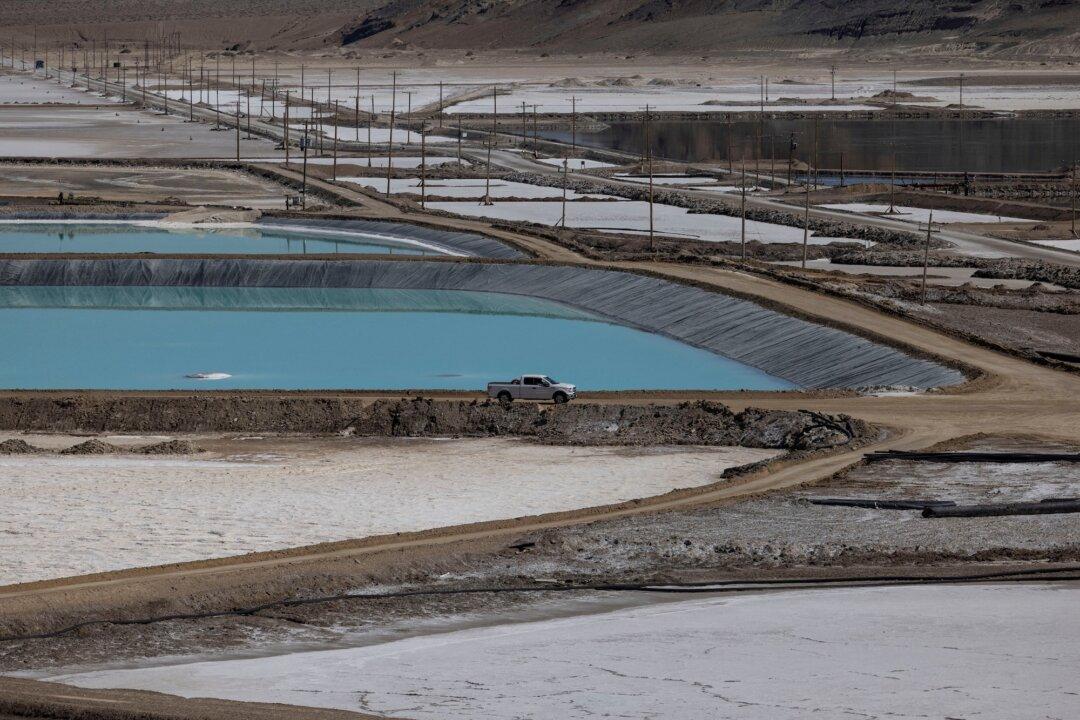A top Federal Reserve official has called for tougher regulations for regional banks, saying on Aug. 15 that a recently unveiled regulatory proposal for more stringent bank capital requirements doesn’t go far enough.
The comment sent the S&P 500 banking index sinking to a one-month low.
‘Doesn’t Go Far Enough’
“My own personal opinion is it doesn’t go far enough. I think it’s a step in the right direction, but I would like to go significantly further,” he said during a Q&A session on Aug. 15 at the APi Group’s Global Controllers Conference in Minneapolis.While the proposed rules only apply to bigger banks with total assets above $100 billion, Mr. Kashkari said that he thinks the regulatory net should be cast more widely.
As Mr. Kashkari spoke about more government regulation, shares of regional lenders PacWest Bancorp, Zions Bancorp, and Western Alliance Bank fell between 3.7 percent and 4.5 percent.
Regulators have expressed confidence that America’s banks can handle the additional burden associated with the tougher capital requirements, while some in the banking industry warn that the proposed rules would raise borrowing costs for consumers and damage the economy.
More Government Regulation
Mr. Kashkari’s remark about imposing greater capital requirements on some banks below the $100 billion threshold came after he addressed this year’s spectacular collapses of Silicon Valley Bank and Signature Bank.The twin bank failures triggered broader turbulence within the banking industry, hitting regional banks particularly hard in the form of increased deposit outflows.
Discussing the causes of the collapses, Mr. Kashkari blamed a combination of rising interest rates, failure to manage risk properly, and U.S. banking regulators dropping the ball.
The panel moderator then asked whether Mr. Kashkari expects more government regulation of the banking sector in light of the failure of supervision.
“I do,” Mr. Kashkari replied, giving as an example the recently proposed “Basel III endgame” rules for increased bank capital requirements.
“What does it mean, capital requirements? This is the buffer that banks have to cover their losses. The more buffer they have, the safer they are but the more buffer they have, the less profitable they are,” he said, adding that “banks don’t like this.”
Calling the proposal “thoughtful” and “very positive,” Mr. Kashkari said the proposed rules wouldn’t apply to community banks but mid-sized and bigger institutions, before adding that he'd like to see the rules apply to institutions with less than $100 billion in assets. He didn’t specify what threshold he had in mind.
Bank Sector Stable But Flare-Ups Possible
Mr. Kashkari also said at the Minneapolis town hall that the Fed has made some progress in its inflation fight, although interest rates might still need to go higher to finish the job.“I’m not ready to say that we’re done,” Mr. Kashkari said. At the same time, with inflation showing signs of slowing in recent months, he said, “I’m seeing positive signs that say, hey, we may be on our way. We can take a little bit more time to get some more data and before we decide whether we need to do more.”
The Fed has lifted its benchmark policy rate target by 5.25 percentage points since March 2022, the fastest pace of increases since the 1980s.
As the Fed funds rate has been pushed rapidly to within a range of 5.25 percent to 5.5 percent, inflation has fallen to 3.2 percent last month from a peak of 9.1 percent in June 2022, as measured by the Consumer Price Index.
Yearly inflation by the Fed’s preferred gauge—the personal consumption expenditures price index—has fallen to 3 percent in June from last summer’s peak of 7 percent.
Still, Mr. Kashkari noted, underlying inflation excluding volatile energy and food prices is still more than twice the Fed’s 2 percent target. He said he needs “convincing” evidence that inflation is coming down further to feel confident the Fed has done enough.
Mr. Kashkari said the Fed is a “long way” from cutting rates, although reducing them next year is a possibility if inflation continues to fall, “just to keep monetary policy at a stable point, not keep tightening.”
The labor market is quite tight, he said, and with economic growth continuing to exceed expectations, there’s no sign that a recession is around the corner. Still, he said, some slowing from rate boosts to date is still likely in the pipeline.
“The good news is that the labor market has remained very strong but it’s a little bit of a double-edged sword because the question in my mind is, ‘Have we done enough to actually get inflation all the way back down to our 2 percent mark or do we have to do more?’” he said.
Addressing financial turbulence, Mr. Kashkari said that community banks didn’t face meaningful pressure during the recent banking sector wobble that was sparked by the failures of Silicon Valley Bank and Signature Bank—and consequent deposit outflows.
“The good news is some of the deposits that were flowing have stabilized,” Mr. Kashkari said. “And by the way, most community banks have much higher levels of capital than bigger banks do,” he added, saying that the recent pressure in the banking sector was mostly concentrated in regional banks.
“So right now it seems like things are quite stable, the banks have gotten through this reasonably well,” he said.
“Now, the risk is that if inflation is not completely under control, and that we have to raise rates further from here, to bring it down, that they might face more losses than they currently face today and these pressures could flare up again in the future,” Mr. Kashkari said.
While things are currently stable in the banking sector, he said he isn’t yet comfortable giving the industry an “all clear” because inflation remains too high.







